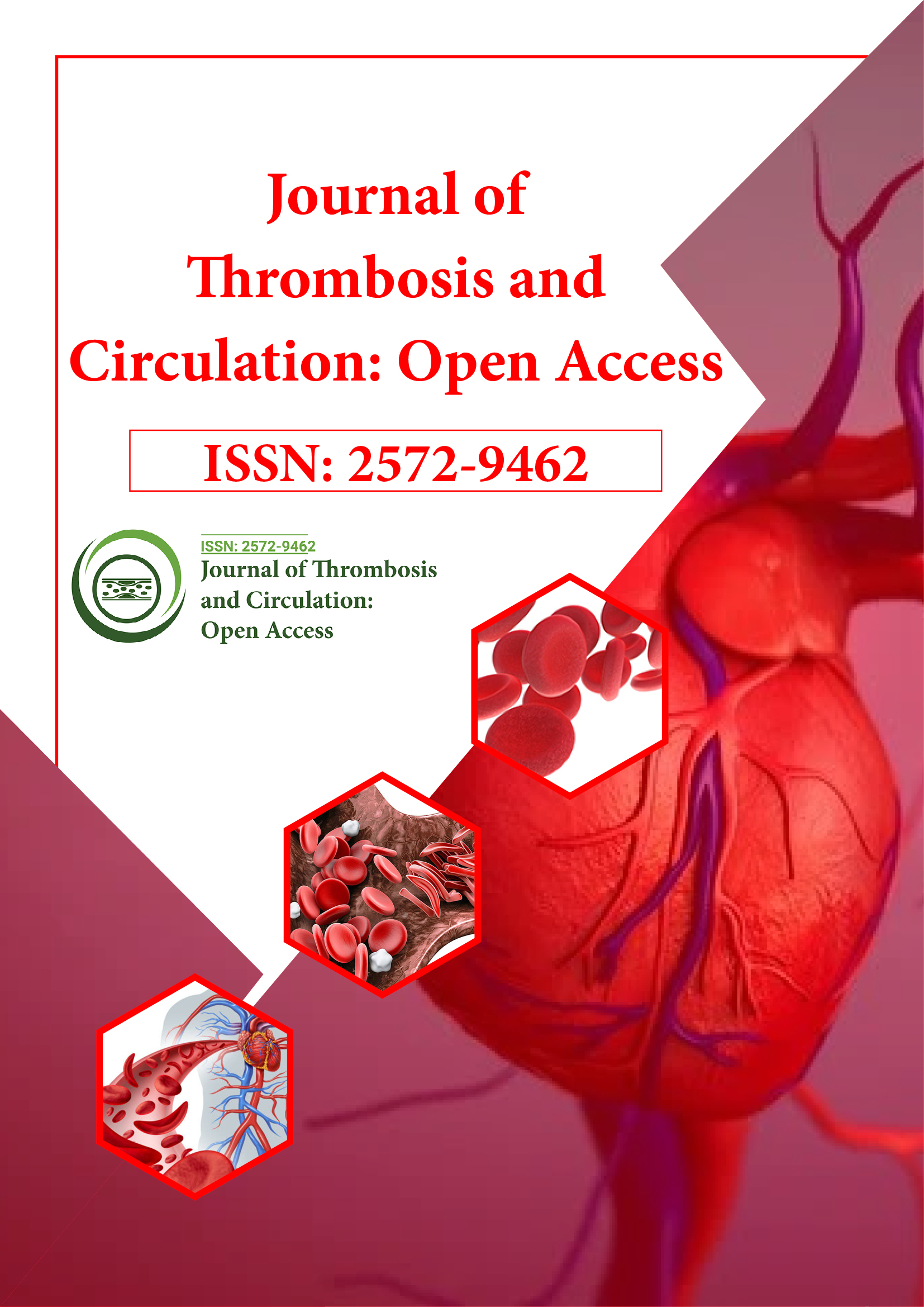Indexed In
- RefSeek
- Hamdard University
- EBSCO A-Z
- Publons
- Google Scholar
Useful Links
Share This Page
Journal Flyer

Open Access Journals
- Agri and Aquaculture
- Biochemistry
- Bioinformatics & Systems Biology
- Business & Management
- Chemistry
- Clinical Sciences
- Engineering
- Food & Nutrition
- General Science
- Genetics & Molecular Biology
- Immunology & Microbiology
- Medical Sciences
- Neuroscience & Psychology
- Nursing & Health Care
- Pharmaceutical Sciences
Perspective - (2024) Volume 10, Issue 1
Exploring the Impact of Stress Response on Haemostasis and Coagulation Dynamics
Nigel Gorver*Received: 01-Jan-2024, Manuscript No. JTCOA-24-25343; Editor assigned: 03-Jan-2024, Pre QC No. JTCOA-24-25343 (PQ); Reviewed: 17-Jan-2024, QC No. JTCOA-24-25343; Revised: 24-Jan-2024, Manuscript No. JTCOA-24-25343 (R); Published: 31-Jan-2024, DOI: 10.35248/2572-9462.24.10.262
Description
The relationship between stress and health has long been recognized, with stress exerting extreme effects on various physiological processes, including hemostasis and coagulation dynamics. Hemostasis, the complex process of blood clot formation and dissolution, plays a critical role in maintaining vascular integrity and preventing excessive bleeding or thrombosis. Stress-induced alterations in hemostatic mechanisms can have significant implications for cardiovascular health, wound healing, and thrombotic disorders.
Stress response and neuroendocrine pathways
The stress response is coordinated by the Central Nervous System (CNS) and the Hypothalamic-Pituitary-Adrenal (HPA) axis, which interact with the Sympathetic Nervous System (SNS) to mobilize the body's resources in response to perceived concerns or challenges. Activation of the HPA axis leads to the release of glucocorticoids, primarily cortisol, which exert extensive effects on various physiological processes, including hemostasis.
Cortisol influences hemostasis through multiple mechanisms, including modulation of platelet function, endothelial function, and coagulation factors. For example, cortisol enhances platelet aggregation and adhesion, promotes vasoconstriction, and increases the synthesis of coagulation factors such as von Willebrand Factor (vWF) and factor VIII. Moreover, cortisol can check fibrinolysis, the process responsible for clot dissolution, by inhibiting plasminogen activators and stimulating Plasminogen Activator Inhibitor-1 (PAI-1) production.
Sympathetic activation and platelet function
Sympathetic activation, a characteristic of the stress response, exerts direct effects on platelet function and hemostasis. The release of catecholamines, such as epinephrine and norepinephrine, enhances platelet reactivity and aggregation, promoting the formation of thrombi in response to vascular injury or endothelial dysfunction.
Catecholamines act on platelet α2-adrenergic receptors, leading to increased intracellular calcium levels and activation of platelet integrins, which are essential for platelet adhesion and aggregation. Additionally, sympathetic stimulation enhances the release of platelet granules containing prothrombotic molecules, such as Adenosine Diphosphate (ADP) and Thromboxane A2 (TXA2), further amplifying platelet activation and thrombus formation.
Endothelial cells, which line the inner surface of blood vessels, play an essential role in maintaining vascular homeostasis by regulating hemostasis, vasomotor tone, and inflammation. Stress-induced endothelial dysfunction, characterized by impaired endothelial Nitric Oxide (NO) production and increased expression of adhesion molecules, disrupts the balance between antithrombotic and prothrombotic factors, predisposing to thrombosis. Under conditions of stress, endothelial cells exhibit a procoagulant phenotype, characterized by reduced expression of thrombomodulin and Tissue Factor Pathway Inhibitor (TFPI) and increased release of von Willebrand factor (vWF) and Tissue Factor (TF). This shift towards a prothrombotic state promotes coagulation activation and thrombus formation, particularly in the setting of pre-existing vascular pathology or hypercoagulable conditions.
The impact of stress on hemostasis and coagulation dynamics has important clinical implications for individuals with cardiovascular disease, thrombotic disorders, and critical illness. Stress management strategies, including relaxation techniques, conscious interventions, and pharmacological interventions targeting the HPA axis or sympathetic nervous system, may help to check the adverse effects of stress on hemostasis and reduce the risk of thrombotic events. Furthermore, healthcare providers should consider the potential impact of psychological stress on hemostatic parameters when evaluating patients with thrombotic disorders or cardiovascular risk factors. Integrating stress assessment and management into routine clinical care may improve outcomes and enhance the effectiveness of thromboprophylaxis and anticoagulant therapy.
In conclusion, the complex exchange between stress response and hemostasis/coagulation dynamics demonstrated the importance of considering psychosocial factors in the assessment and management of thrombotic disorders. Further research is needed to explain the underlying mechanisms linking stress to hemostatic dysregulation and to develop targeted interventions aimed at mitigating the thrombotic risk associated with stress. By addressing the complex interactions between stress and hemostasis, healthcare providers can optimize thromboprophylaxis strategies and improve patient outcomes in high-risk populations.
Citation: Gorver N (2024) Exploring the Impact of Stress Response on Haemostasis and Coagulation Dynamics. J Thrombo Cir. 10:262.
Copyright: © 2024 Gorver N. This is an open-access article distributed under the terms of the Creative Commons Attribution License, which permits unrestricted use, distribution, and reproduction in any medium, provided the original author and source are credited.
